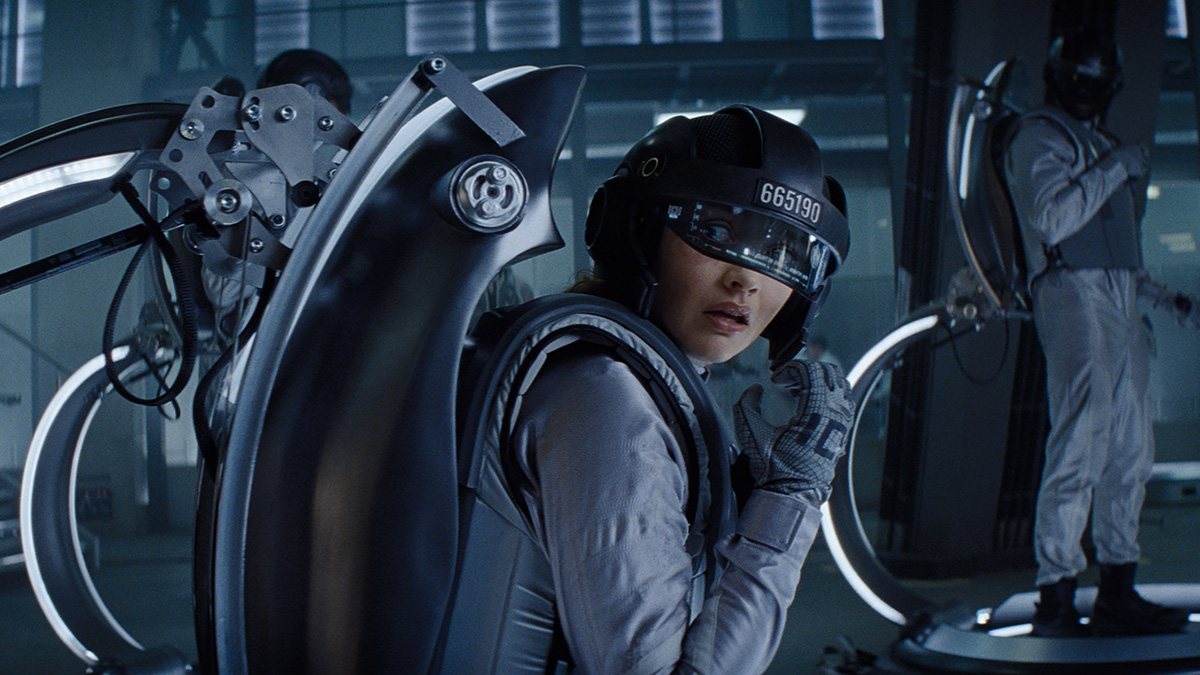Nostalgia is a powerful force.
In 2011, a deep-rooted love for our pop-culture past propelled Ernest Cline’s novel Ready Player One onto bestseller lists, and the success of his sci-fi homage to ’80s media eventually put it in the hands of Steven Spielberg, one of Hollywood’s most prolific producers of cinematic nostalgia.
It seemed like the perfect pairing of story and filmmaker, but one question loomed large over the project: Could any director — even a three-time Oscar winner and director of genre-defining classics such as ET and Raiders of the Lost Ark — prevent a Ready Player One movie from collapsing under the weight of its own reverence for, well … just about everything ’80s?
It seemed like the perfect pairing of story and filmmaker.
Directed by Spielberg from a script by Cline and Zak Penn (The Avengers), Ready Player One casts Tye Sheridan (X-Men: Apocalypse) as Wade Watts, a young resident of the Ohio slums in the year 2045 who gets caught up in a race to find the keys to a virtual universe known as OASIS. The treasure hunt pits him against a powerful corporation bent on owning OASIS (and its vast potential to create wealth), and allies him with a mysterious fellow treasure hunter and a group of other colorful heroes in a virtual environment where anything is possible.
In the wrong hands, a big-screen adaptation of the sprawling, fandom-fueled Ready Player One had flop written all over it, but Spielberg has rarely (if ever) been the wrong hands for any project he took on.
Luckily for us, despite the film’s heavy reliance on computer-generated visuals, Spielberg does an amazing job of filling the story’s virtual avatars with as much emotional depth as their live-action counterparts.
Where other films involving virtual universes typically have trouble maintaining the audience’s emotional connection to a character as the story shifts between live-action and virtual elements, Ready Player One makes the transition look easy. Spielberg has always had a deft touch when it comes to forging a relationship between the audience and his characters, human or otherwise, and Ready Player One is a great reminder of how important that skill is for a filmmaker.
There isn’t a single avatar in Ready Player One that feels soulless or robotic.
To that point, there isn’t a single avatar in Ready Player One that feels soulless or robotic, and even the most inhuman-looking avatars of OASIS feel fully inhabited by the human cast portraying them.
What might be an even greater accomplishment, however, is that Spielberg manages to strike a satisfying balance between the more overdone, fandom-fueled elements of Cline’s story and the nostalgia the story is intended to evoke.
Where Cline’s original story seems to be content to occasionally get mired in its own adoration of the ’80s-era touchstones that inspired it, Spielberg and the Ready Player One movie’s creative team wisely avoid getting lost in the weeds by keeping the references more subtle. (Granted, subtlety is relative when adapting a story so deeply rooted in obsessive fandom.)
Devotees of the book need not worry, though, as Wade (and his avatar, Parzival) is still prone to rapid-firing ’80s media references at the slightest provocation. These moments, however, are framed as character-developing scenes in the film rather than the extended dissertations on ’80s-culture minutia that the book provided.
The film’s entire cast gives strong performances as both their human and virtual characters, but it’s Mark Rylance’s portrayal of OASIS creator James Halliday that particularly stands out in Ready Player One. Cline’s novel was ostensibly about Wade discovering Halliday’s deeply personal reasons for creating OASIS, but that aspect of both the character and the story itself is more fully realized in the film due to Rylance’s outstanding performance.
Fans of the novel may be pleasantly surprised by how much they enjoy the film’s willingness to diverge from the source material.
Hardcore loyalists generally don’t have the best reputation when it comes to embracing change — especially when it comes to online discourse — but fans of Cline’s novel may well be pleasantly surprised by how much they enjoy the film’s willingness to diverge from the source material. The script takes Wade, his allies, and his enemies to some places in the pop-culture landscape that weren’t part of the original novel’s narrative, but these alterations end up making the story feel less homogenous in the end.
It was always assumed that the film wouldn’t be able to sample from as many media touchstones as the novel due to the complicated licensing issues that exist for big-screen projects, but Ready Player One casts a surprisingly wide net that should offer a little something for everyone — even if the ’80s weren’t your primary cultural touchstone.
That Spielberg is able to take a story as unwieldy as Cline’s original novel and craft it into something as easily digestible and emotionally resonant as Ready Player One speaks volumes to his still-vibrant talents as a filmmaker.
Ready Player One doesn’t reach enough heights to be considered a cultural touchstone itself, and it doesn’t stand shoulder-to-shoulder with Spielberg’s most iconic films, either, but that shouldn’t detract from its many charms.
Spielberg’s latest cinematic adventure is a fantastic, thrilling, and wonderfully fun film that not only pays satisfying homage to the many works that inspired it, but also tells a compelling story on its own about life, creativity, and the profound impact of the choices we make.






















